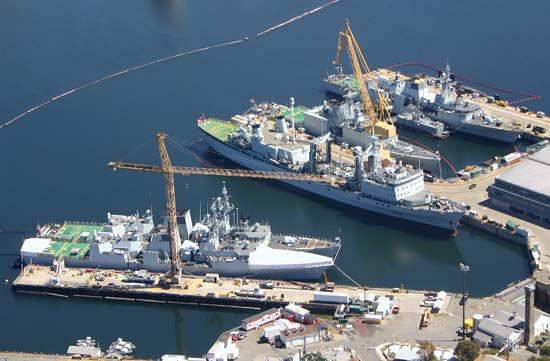Esquimalt
Our editors will review what you’ve submitted and determine whether to revise the article.
Esquimalt, district municipality and western suburb of metropolitan Victoria, southwestern British Columbia, Canada, at the southeastern end of Vancouver Island, on Juan de Fuca Strait. The name means “place of gradually shoaling waters” in the local Indian language. Its harbour was visited (1790) by Manuel Quimper of the Spanish navy, who called it Puerto de Cordova to honour the Mexican viceroy. The community originated during the Crimean War (1853–56) as a naval base for a combined British-French fleet, which attacked the Russian northern Pacific port of Petropavlovsk on the Kamchatka Peninsula of Siberia. The British-owned installations were transferred to the Royal Canadian Navy in 1910. Esquimalt is the site of one of the world’s largest dry docks and is now the headquarters of the Canadian Maritime Forces Pacific. Inc. 1912. Pop. (2006) 16,840; (2011) 16,209.











